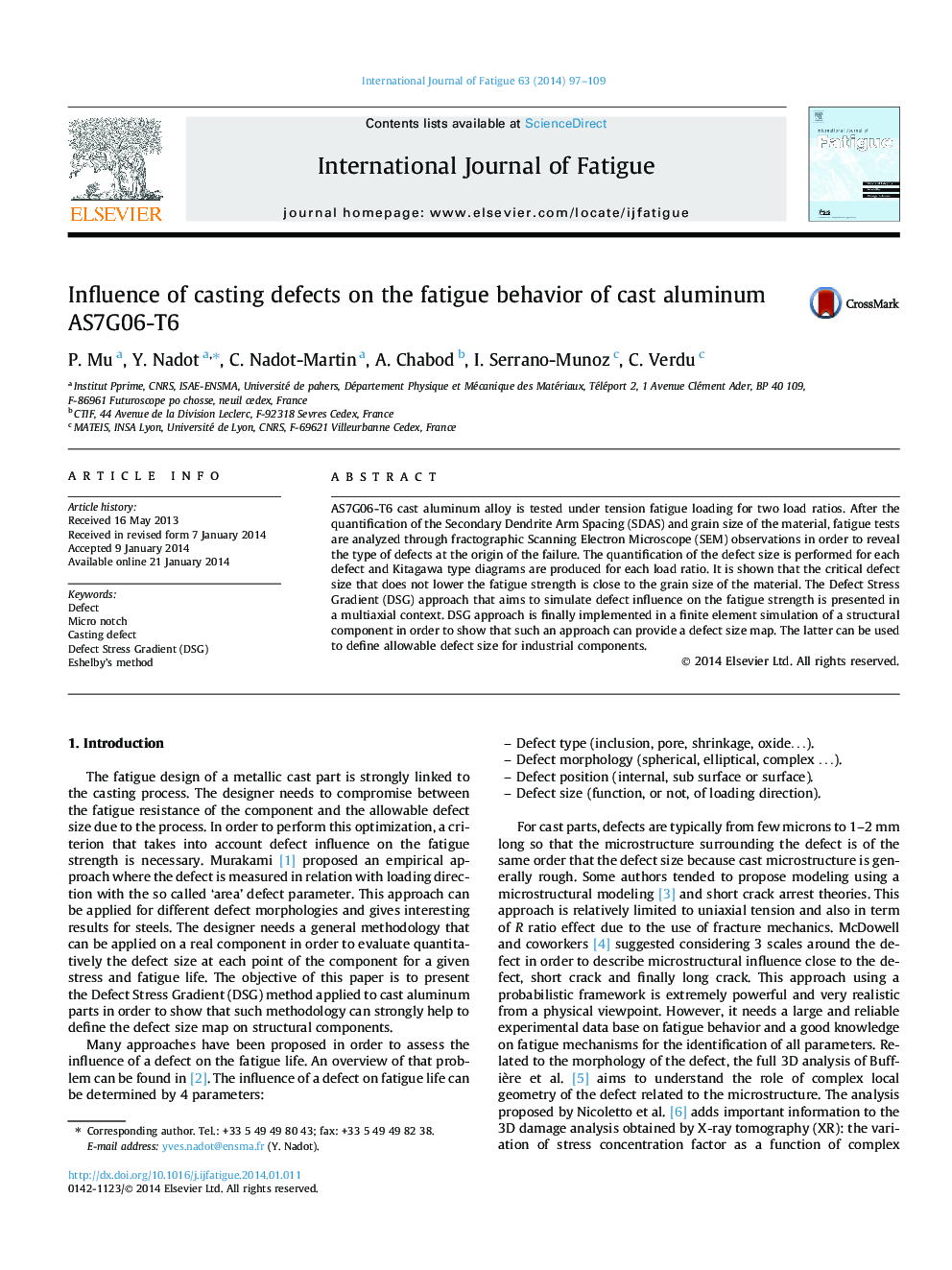| Article ID | Journal | Published Year | Pages | File Type |
|---|---|---|---|---|
| 775299 | International Journal of Fatigue | 2014 | 13 Pages |
•Critical defect size is linked to the grain size rather than to the SDAS on cast aluminum.•Defect Stress Gradient (DSG) criterion shows good predictions.•DSG allows producing defect size maps on structural component.
AS7G06-T6 cast aluminum alloy is tested under tension fatigue loading for two load ratios. After the quantification of the Secondary Dendrite Arm Spacing (SDAS) and grain size of the material, fatigue tests are analyzed through fractographic Scanning Electron Microscope (SEM) observations in order to reveal the type of defects at the origin of the failure. The quantification of the defect size is performed for each defect and Kitagawa type diagrams are produced for each load ratio. It is shown that the critical defect size that does not lower the fatigue strength is close to the grain size of the material. The Defect Stress Gradient (DSG) approach that aims to simulate defect influence on the fatigue strength is presented in a multiaxial context. DSG approach is finally implemented in a finite element simulation of a structural component in order to show that such an approach can provide a defect size map. The latter can be used to define allowable defect size for industrial components.
